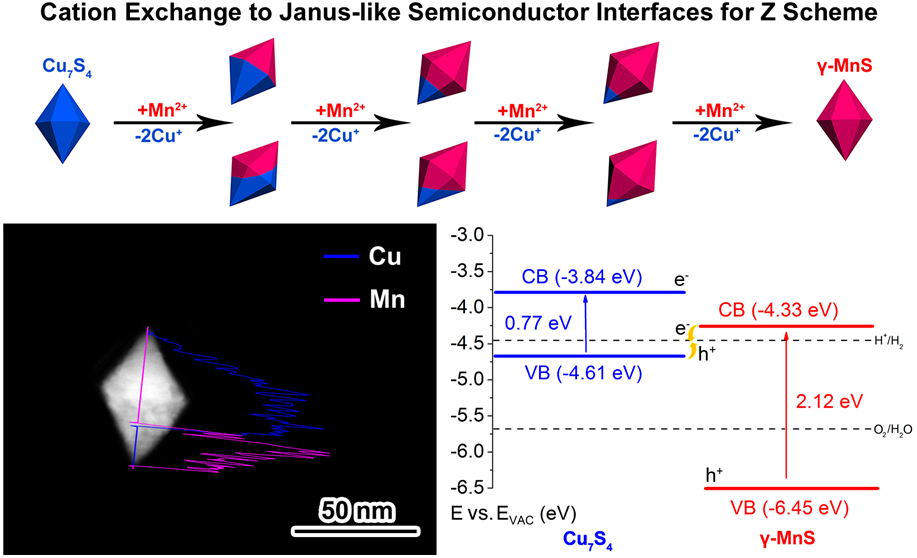Photocatalytic water splitting producing hydrogen and oxygen with solar light is a sustainable energy technology.he research group led by Prof. XIONG Yujie at the University of Science and Technology of China (USTC) has developed a class of noble-metal-free Z-scheme photocatalysts which exhibit the enhanced performance in photocatalytic hydrogen production, based on a facile cation-exchange approach.
The photocatalytic water splitting is a promising approach to the conversion from solar to hydrogen energy by harvesting solar light to produce hydrogen and oxygen. The breakthrough enables development of hydrogen energy production, among various new sustainable energy technologies, meeting the global energy demand. To harvest and utilize broadband light, various all-solid-state artificial Z-scheme photocatalytic systems have been developed based on two semiconductors with staggered-aligned band structures and different bandgaps. This work has been published in Angewandte Chemie (Angew. Chem. Int. Ed. DOI: 10.1002/anie.201700150).
Two structural characteristics are necessary for an ideal Z-scheme system. The first characteristic is the system must contain well-defined interfaces for efficient interfacial charge transfer. Secondly, the system must include exposed surfaces of both semiconductors for surface reduction and oxidation half reactions. Noble metals should be excluded from their interfaces as cocatalysts to promote hydrogen evolution for the concern of reducing costs, though they are commonly used as electron mediators to facilitate the charge transfer between semiconductors in Z scheme. The exclusion of noble metals from Z scheme can also eliminate the possible backward reactions over metal surface back to water.

Illustration for the noble metal-free Z-scheme materials towards broadband photocatalytic water splitting (Courtesy of XIONG Yujie and Angewandte Chemie)
To meet the requirements, Xiong research group has developed a facile cation-exchange approach to form Janus-like structures between γ-MnS and Cu7S4 with exposed surfaces and high-quality interfaces without the need of using noble metals. The γ-MnS and Cu7S4 can complementarily absorb light to exhibit the dramatically enhanced photocatalytic hydrogen performance in full solar spectrum. This work provides insights into the surface and interface design of hybrid photocatalysts, and offers a noble metal-free approach to broadband photocatalytic hydrogen production.
Prof. Junfa Zhu made an important contribution to the synchrotron radiation-based photoelectron spectroscopy characterizations in this work. It was published titled as "Noble-Metal-Free Janus-likeStructures by Cation Exchange for Z-SchemePhotocatalytic Water Splitting underBroadbandLight Irradiation". This work was financially supported by the 973 Program, NSFC and CAS Key Research Program of Frontier Sciences.
Publication link: http://onlinelibrary.wiley.com/wol1/doi/10.1002/anie.201700150/full
Contact:
Prof. XIONG Yujie
yjxiong@ustcnet.
(School of Chemistry and Material Sciences)